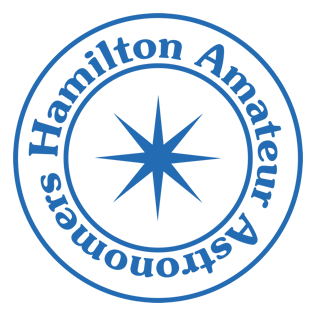I will keep my impressions of the night brief in hopes that others will add to it. With about 15 people on the hill there was so much going on that this will need to be a group effort.
With the sky clearing nicely I checked the collimation of our 12″ dob to make sure we’d make the best of it. Glad I did as it was way off. However, with a barlowed laser collimator and Gail calling out directions as I adjusted the primary screws, we got it perfectly aligned within minutes.
Pretty well anything we looked at was a delight. We cruised through the usual popular items, sharing some views with a Ukrainian family that Ann Tekatch had adopted at the gate.
For me, the best part of the night, though, happened just before midnight. I’d decided to look for the Eskimo Nebula, and after aiming the scope to the general area with the aid of a Rigel Quickfinder I fine-tuned the aim with a 9×50 finderscope. To my surprise, I could see the nebula in the finderscope. When I got to the eyepiece, however, the nebula looked very comet-like. Then it hit me – I’d stumbled across Comet Lulin making a close pass to the Eskimo Nebula. In fact they were about 1/3 of a degree apart making for a nice pairing in the same FOV.
But the best was yet to come. Just as the scope’s tube was getting a layer of frost on it, I turned it in the direction of Saturn and WOW!!! I have rarely, if ever, seen Saturn so well-defined. Although the rings are nearly edge-on, at 214x magnification I could easily make out the difference in shading between A and B. The ring shadow across the globe was a dark, razor-thin line, and the gap between the rings and the planet appeared large enough to drive a truck through. The North and South Equatorial bands were tan lines across a creamy background and the moons Titan, Dione, Iapetus, Rhea, and Enceladus were bright points of light – the latter two sitting together right on the edge of the rings. What a fantastic sight on a frosty night.
Glenn
